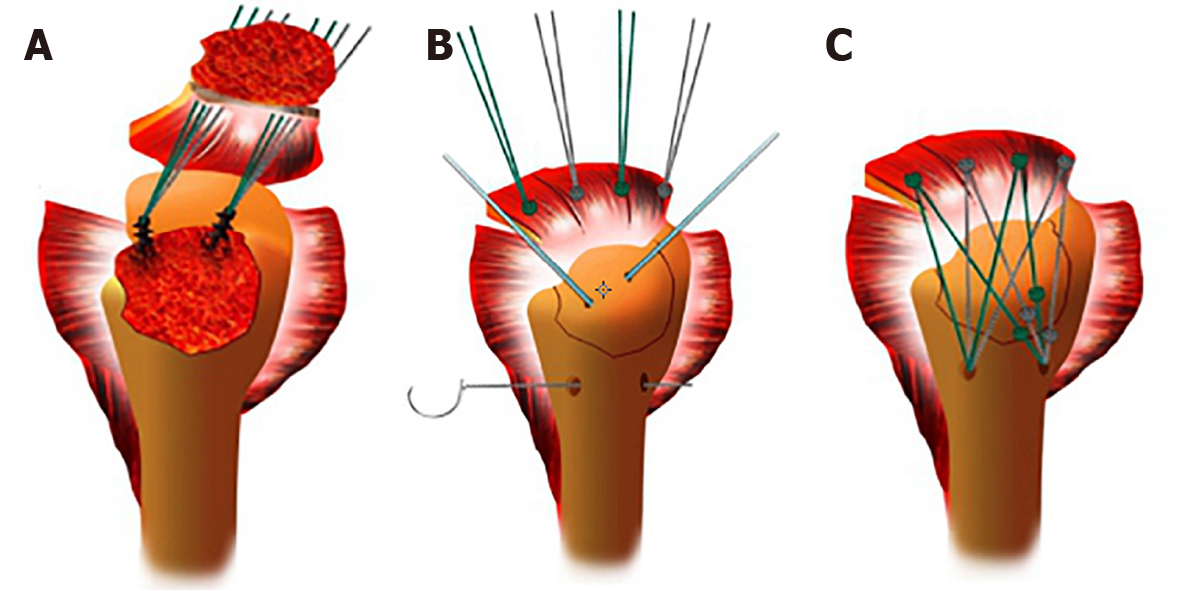Copyright
©The Author(s) 2022.
World J Clin Cases. Jan 7, 2022; 10(1): 117-127
Published online Jan 7, 2022. doi: 10.12998/wjcc.v10.i1.117
Published online Jan 7, 2022. doi: 10.12998/wjcc.v10.i1.117
Figure 3 Schematic diagram of the operation procedure.
A: Two 5.0-mm anchors were inserted into the cartilaginous margin of the humeral head, and then the anchor lines were threaded through the rotator cuff tissue; B: A Kirschner wire was used for temporary fixation of the greater tuberosity and a bone tunnel of appropriate length was drilled at the distal outer edge of the fracture line at approximately 5-10 mm, depending on the size of the fracture block; C: The larger tuberosity fracture block was reduced and fixed by the suture bridge technique, to repair the torn rotator cuff tissue. Because there should not be too many knots, the number of sutures used depended on the size of the fracture fragment. Generally, three sutures can be firmly fixed for avulsion fractures.
- Citation: Kong LP, Yang JJ, Wang F, Liu FX, Yang YL. Minimally invasive open reduction of greater tuberosity fractures by a modified suture bridge procedure. World J Clin Cases 2022; 10(1): 117-127
- URL: https://www.wjgnet.com/2307-8960/full/v10/i1/117.htm
- DOI: https://dx.doi.org/10.12998/wjcc.v10.i1.117









